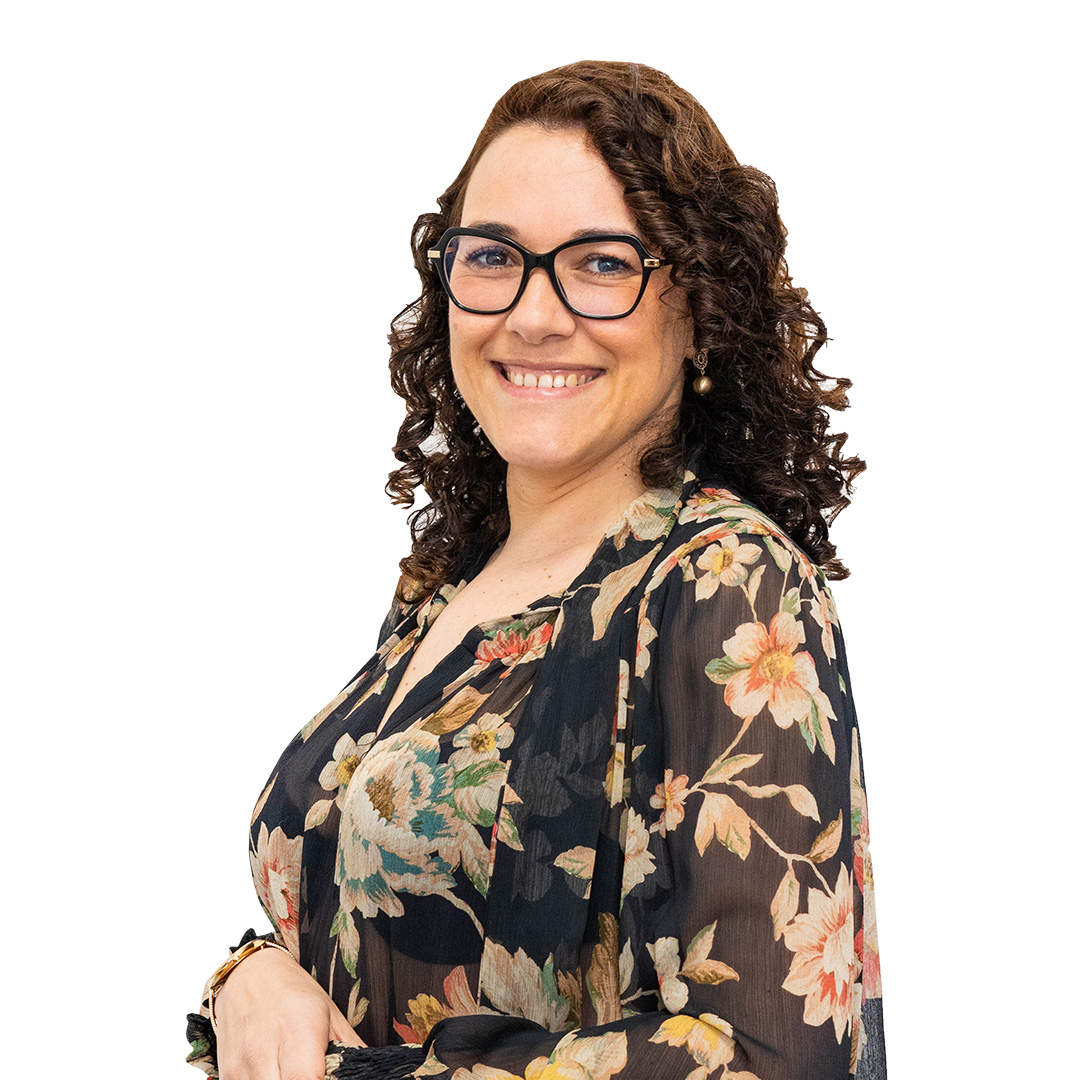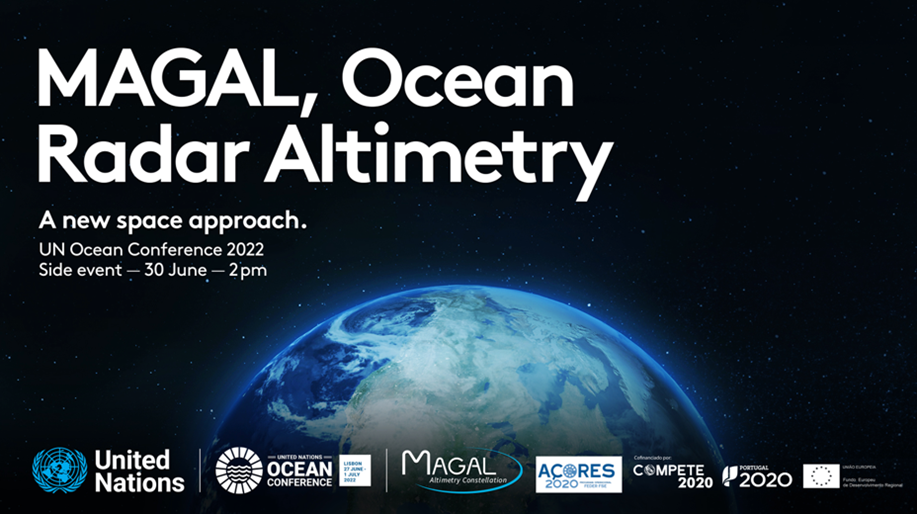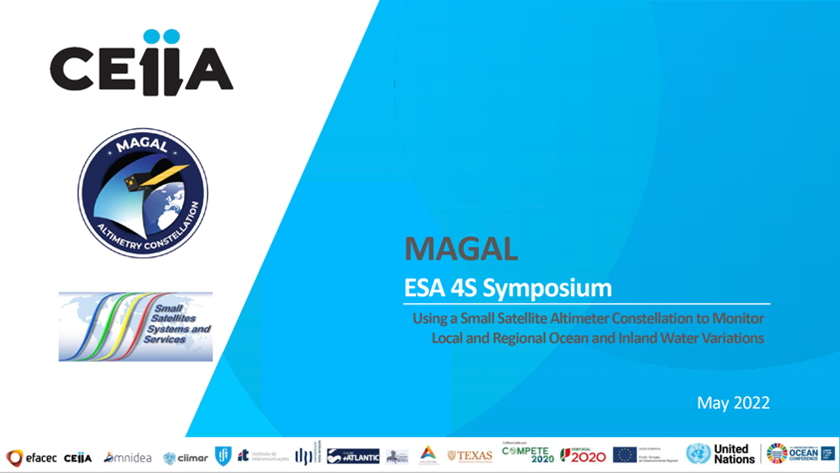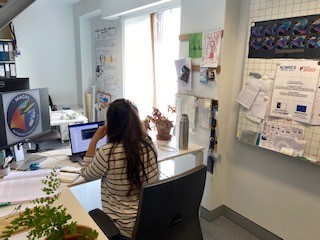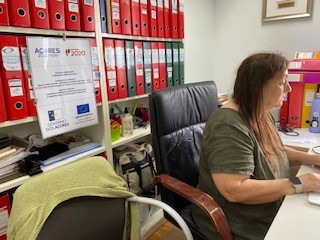
| Acronym: | MAGAL |
| Cost Center: | 1015 |
| Operation Code: | ACORES-01-0145-FEDER-000129 |
| Title: | MAGAL Constellation - Defining the pillar of a future constellation for monitoring the Ocean and Climate Change |
| Start-End: | 01-07-2020 - 30-06-2023 |
| Entidade Beneficiária Principal: | Fundação Gaspar Frutuoso |
| Entidade Beneficiária Co-Promoção: | Air Center |
| Gestores da FGF: | Lúcia Cláudio |
| Responsible Researcher: | Ana Maria de Pinho Ferreira Silva Fernandes Martins |
| R&D Units: | OKEANOS - Instituto de Investigação em Ciências do Mar |
| Sub-Áreas: | Oceanography |
| Entidade | Montante | Air Center |
|---|---|---|
| Total Eligible Cost | 159.053,91 € | 57.895,04 € |
| Direção Regional da Ciência e da Tecnologia (15.0 %) | 23.858,09 € | 8.684,26 € |
| PO Açores 2020 - FEDER (85.0 %) | 135.195,82 € | 49.210,78 € |
Main Objectives:
Increase quality scientific production oriented towards intelligent specialization.
MAGAL will seek to understand long-term variability in local/regional/global climate due to varying ocean parameters by developing the next generation of radar altimetry instruments to be adapted for a constellation of small satellites. It is intended to encourage the growth of (inter)national scientific and engineering capacity to generate innovation and industrial development, promoting the internationalization of national entities (including UAçores and AIR Centre).
Our main objectives are:
MAGAL's ambition is to contribute to the knowledge of how the climate can be affected by ocean parameters, through the development of a constellation of small satellites and an innovative system for processing and visualizing data. The objectives proposed by MAGAL leverage Space/Earth interactions, in line with the “Atlantic Interactions” agenda and, on a regional scale, with the RIS 3 Azores, and on a global scale, with the UN Sustainable Development Goals.
Project Description:
The Ocean has taken on a more prominent role both as a driver of technological, scientific, economic and social development, and as a resource that we must protect and value. One of the best ways to explore, monitor and value the open ocean, in an economical and sustainable way, is to leverage Space/Earth interactions, in line with the “Atlantic Interactions” agenda and, on a global scale, with the Sustainable Development Goals of the UN.
The Consortium seeks to understand the long-term variability in local, regional and global climate induced by steric variation (temperature and salinity) of the oceans. At the same time, monitoring of soil water storage (soil moisture, snow, surface water and groundwater) needs to keep pace with ocean measurements. Innovative data assimilation technologies need to be developed and applied in tandem with ocean and land modeling to provide consistent and systematic terrestrial data.
Improved spatial and temporal resolution can be achieved by developing the next generation of radar altimeters to be adapted for a future constellation of small satellites (the MAGAL constellation). Through the Consortium's extensive experience in multi-satellite and multivariate data assimilation, MAGAL also includes an innovative data processing and visualization system, using advanced high-performance modeling, estimation techniques, statistical and scientific methods of machine learning and analysis. of errors in data gathered from different sources.
MAGAL will therefore foster the growth of regional/national scientific and engineering capacity to generate innovation and industrial development, combining for-profit partners, such as EFACEC and Omnidea, with predominantly scientific ones, such as CIIMAR, ITAveiro, IST, FGF and UBI, through interface entities such as CEiiA, +Atlantic and AIR Centre. Simultaneously, MAGAL promotes the internationalization of Portuguese entities, taking advantage of the experience and organizational culture of American institutions such as UT Austin.
By developing Portuguese skills, the European space sector will also be strengthened and will thus contribute to Europe's global competitiveness. This project will also promote cooperation with American entities, taking advantage of their experience and organizational culture, to help even more to face truly global issues such as climate change, pollution and the depletion of natural resources.
Results:
With regard to oceanographic and climatological studies (eg studies on oceanic climate change and mesoscale studies), this new satellite constellation will improve the correlation of data acquired by radar altimetry and increase temporal sampling when compared to current Jason missions.
Regarding the constellation design, it is expected to decrease the repetition cycle below the 10-day reference value of the Jason missions and an increase in effectiveness of at least 50% when compared to the Jason-3 and Sentinel-3 measurements , reducing development cycles closer to typical CubeSat projects of less than 3 years.
In terms of platform design, it is expected that, in technological terms, we can reduce the total mass of the radar altimeter by 20%, to be less than 100 kg, with a form factor that is 25% smaller, less than 1 m x 0.4 m x 0.4 m and even if for the development of the payload it is necessary to reach a mean squared total error below 22.5 cm and closer to 16 cm or less.
Within the scope of entrepreneurship/business on Big Data analysis, it is intended to implement and demonstrate an information and analysis center to process the acquired data, using state-of-the-art models, to provide high-value commercial and scientific information, through the development of an architecture sufficiently sized to ingest, process and combine and compare MAGAL measurements with the necessary collective historical scientific records, including altimetry, datasets and Argos and GRACE models with minimal latency (with the aim of achieving near real time).
Finally, it is intended to develop and demonstrate an improved visualization system combining different data from various sources to present a holistic picture of selected ocean-climate phenomena by regularly generating static and dynamic global and regional images of MAGAL measurements and products added value such as sea level, sea surface anomalies, geostrophic currents, topographic ocean dynamics, heat storage, etc., for commercial and scientific purposes ranging from mission diagnosis and calibration to policy and rescue operations.
Throughout the execution of the project, various results will be presented both to the scientific community (through reports, conference presentations, posters, reports, etc.) and to the general public, including a project website and two workshops regional sessions for stakeholders and also a final workshop with a presentation of the MAGAL platform.
Team
| Nome | Category | Start | Termo |
|---|---|---|---|
| Catharina Diogo Pieper | Técnico Superior | 16-03-2022 | 30-04-2023 |


